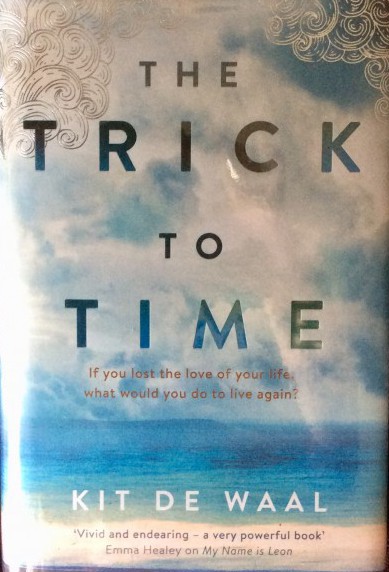Inspiring Older Readers
 posted on 17 May 2018
posted on 17 May 2018
The Trick to Time by Kit de Waal
This Birmingham-based author wove the Handsworth riots into the landscape of her first novel, My Name Is Leon, and I know that she likes to ground her stories against a backdrop of real events that she remembers living through. So when I first read the blurb on the inside cover of this new novel which described how Mona, a young Irish girl, gets caught up in a tragedy in Birmingham in the 1970s, I was pretty certain that the terrible Birmingham pub bombings might be part of the story - as indeed they were. The trauma of that terrible night is the cause of grief for Mona for several reasons but this is ultimately a book about survival and living a worthwhile life.
We first meet her as a middle aged woman who lives alone in a flat by the sea. She has been making dolls by hand for twenty three years and treats each new creation with tender care and attention to detail. I liked the way that the author meticulously describes how she makes them because it provides a quiet intimacy with this very intriguing character. But it seems that she also provides a very special service for clients who come by recommendation to the shop. They bring something with them which seems to be clothing that they wish to be used for a doll and provide information about the weight of the doll they are commissioning. I don’t think I am giving anything away by telling you that this is the weight of a baby and it was clear to me straight away that Mona was involved in helping bereaved parents cope with a death. She is a skilled seamstress and so makes and clothes all of the dolls but relies on the skills of a local carpenter to make the basic shapes. He lives alone in his studio on the seafront. His living space is beautifully evoked:
‘It’s a beautiful space. You couldn’t help but make something beautiful in it. It smells of trees and forests, of resin and oil and sawdust and metal and all the minerals that make up the sea. It smells of food if he’s been cooking on his two ringed stove in the corner, bacon sometimes or a fried egg, fish and chips if he can’t be bothered. Certain places, certain corners of the open space, smell of coffee or whiskey, and although he keeps it scrupulously clean, his toilet smells faintly of urine, like the back alley of a pub - but that’s men for you.’
He is a loner and Mona feels great empathy for him although she always respects his privacy. They have obviously been connected for many years and work together very effectively. At first I wondered about a possible romantic interest but this is not at all straightforward, especially as Mona is becoming involved with Karl, a rather fascinating and enigmatic German man who lives nearby. They reveal their past lives to one another and they find that they have particularly vivid imaginations that allow them to share flights of fancy together. They meet several times and it seems likely that their friendship will blossom into something special.
This very unusual story moves back and forth over the years as Mona remembers key events in her early life. These include plenty of bitter sweet Irish memories like the precious moments spent with her terminally ill mother who died when she was a child and the pleasure of eating a knickerbocker glory in Wexford where her father took her on her sixteenth birthday. Once grown up, we learn how she travelled to England to find work and lived with other Irish girls in a Birmingham boarding house. The author manages to convey how everything seemed fresh, exciting and even a bit dangerous compared to her rather one dimensional dull life in rural Ireland. Then she remembers how she met William at the Locarno dance hall and fell deeply in love with him:
‘Love is like being on the swings in the park, pushed too high and right at the top the metal ropes buckle and she floats, still and weightless before the inks catch and she hurtles back down and then up, up, up again, floats for a moment and, swoosh, back down’
They marry and spend some good times together as a young couple until the terrible events on the night of the Birmingham bomb change everything. The visceral hatred meted-out to the Irish community in the aftermath of the pub bombings is something that I can only dimly remember, but that part of the story reminded me of how very frightening it must have been for weeks afterwards. Nothing can ever be the same again but Mona treasures the happier memories and learns to cope with the more painful ones. As she explains to one of her clients:
‘There is a trick to time, Sarah. You can make it expand or you can make it contract. You can make the most of what you have’.
I really enjoyed My Name is Leon but felt that it might have been a bit too hectic with so much packed into the plot. This second novel has a gentler more poetic rhythm which was exactly right for conveying the layers of sorrow and hope experienced by Mona. Despite her earlier troubles, she has lived a satisfying life living on the coast with a flourishing business and is surrounded by many caring friends. I am very pleased to say that it has a sort of fairy tale ending but one that is absolutely believable – something that this author is very good at.
Karen Argent
May 2018